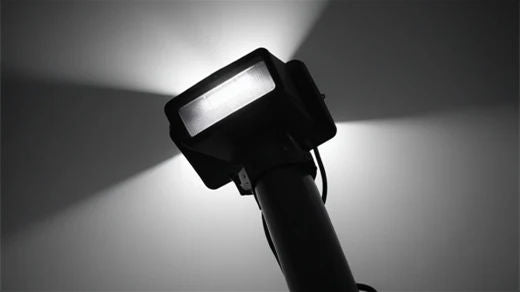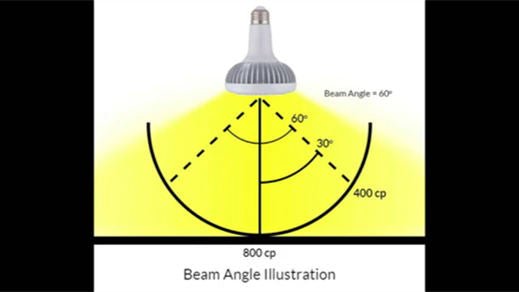Urban road lighting is crucial for ensuring the safety, security, and efficiency of city transportation networks. Properly optimized street light beam angles are essential to achieving these goals. Optimizing the beam angle involves careful consideration of various factors to provide adequate illumination while minimizing light pollution and energy consumption. This blog will explore strategies and best practices for optimizing the beam angle of street lights on urban roads.
Understanding Beam Angle and Its Importance
The beam angle of a street light defines the spread of light emitted from the fixture. It is measured in degrees and determines how light is distributed across the road surface and surrounding areas. Proper beam angle optimization ensures that the light is effectively used to illuminate specific areas, enhancing visibility and safety for both drivers and pedestrians.
Benefits of Optimized Beam Angles
- Enhanced Safety: Proper beam angles provide uniform illumination, reducing dark spots and glare, thereby enhancing safety for all road users.
- Energy Efficiency: Optimized beam angles ensure that light is directed where needed, reducing energy wastage and lowering electricity costs.
- Minimized Light Pollution: By focusing light on specific areas, optimized beam angles help minimize light spill and reduce light pollution, preserving the night sky.
- Improved Aesthetics: Well-designed lighting enhances the visual appeal of urban areas, contributing to a pleasant and welcoming environment.

Key Factors in Optimizing Beam Angle
1. Road Type and Layout
Different road types and layouts require different lighting strategies. For instance, wide multi-lane roads need different beam angles compared to narrow residential streets. The layout, including the presence of intersections, curves, and pedestrian crossings, also influences beam angle requirements.
2. Mounting Height and Pole Spacing
The height at which street lights are mounted and the spacing between poles significantly impact the beam angle. Higher mounting heights generally require narrower beam angles to ensure light reaches the ground effectively. Conversely, lower mounting heights can use wider beam angles for broader coverage. Pole spacing should be optimized to provide continuous illumination without gaps.
3. Light Distribution Patterns
Understanding various light distribution patterns is essential for selecting the right beam angle. Common patterns include:
- Type I: Suitable for narrow paths and sidewalks.
- Type II: Ideal for wide walkways and narrow roads.
- Type III: Used for wider roads and parking areas.
- Type IV: Designed for larger areas such as parking lots and intersections.
- Type V: Provides circular light distribution, suitable for large open spaces.
4. Environmental Considerations
Environmental factors such as weather conditions, surrounding architecture, and vegetation affect how light is distributed. For instance, areas with heavy rainfall or fog may require narrower beam angles to cut through adverse conditions, while urban areas with tall buildings may need customized lighting solutions to avoid light blockage and shadows.
Strategies for Optimizing Street Light Beam Angles
1. Conducting Detailed Lighting Audits
A thorough lighting audit helps in understanding the current lighting conditions and identifying areas that need improvement. This involves measuring existing light levels, analyzing traffic patterns, and assessing the needs of different road users. The audit data provides a foundation for making informed decisions about beam angle optimization.
2. Utilizing Advanced Lighting Technologies
Modern LED street lights come with adjustable beam angles and smart controls that allow for precise light distribution. These technologies enable dynamic adjustments based on real-time conditions, such as changes in traffic flow or weather. Implementing smart lighting systems can greatly enhance the effectiveness of beam angle optimization.
3. Implementing Customized Lighting Plans
Each urban area has unique lighting requirements. Customized lighting plans that consider the specific needs of different road segments, intersections, and pedestrian zones can ensure optimal beam angle selection. Tailoring the lighting approach to the specific environment helps in achieving uniform illumination and enhances overall safety and efficiency.
4. Regular Maintenance and Monitoring
Regular maintenance and monitoring are essential to ensure that street lights continue to operate at optimal beam angles. This includes routine inspections, cleaning, and adjustments to account for any changes in the urban landscape. Proactive maintenance helps in addressing issues before they impact lighting performance.
5. Community Involvement and Feedback
Engaging the community in the lighting optimization process can provide valuable insights. Gathering feedback from residents, drivers, and pedestrians about lighting conditions and areas of concern helps in fine-tuning the beam angles to better meet the needs of the urban population.

Case Studies in Beam Angle Optimization
Case Study 1: New York City
New York City implemented an extensive LED street lighting upgrade to improve energy efficiency and reduce light pollution. By optimizing the beam angles of the new fixtures, the city achieved better light distribution, enhanced safety, and significant energy savings. The project involved detailed planning, using advanced lighting technologies and smart controls to adapt to different urban environments.
Case Study 2: Los Angeles
Los Angeles undertook a similar initiative, focusing on optimizing street light beam angles to enhance visibility and safety. The city employed a combination of narrow and wide beam angles to address the diverse lighting needs of various neighborhoods, resulting in improved pedestrian safety and reduced glare for drivers.
Conclusion
In conclusion, optimized beam angles for street lights not only improve visibility and safety but also contribute to the sustainability and aesthetic appeal of urban areas. By implementing best practices and leveraging advanced technologies, cities can create well-lit, safe, and energy-efficient urban environments for all residents and visitors.


































Leave a comment
This site is protected by hCaptcha and the hCaptcha Privacy Policy and Terms of Service apply.